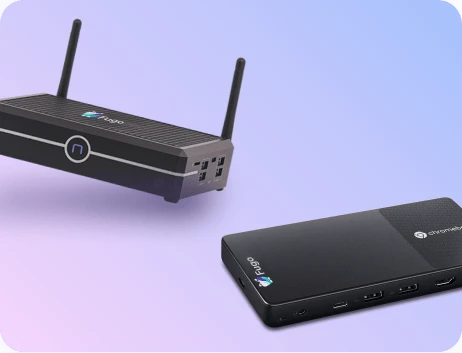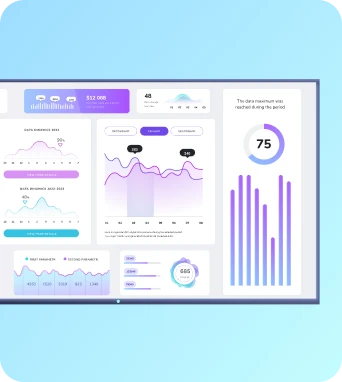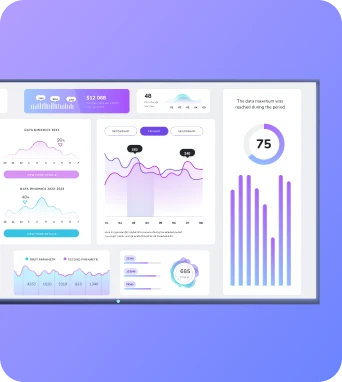Bluetooth-enabled displays
Bluetooth-enabled displays are screens with integrated Bluetooth radios that support device discovery, peripheral pairing and low-energy signalling. They enable local interactions with keyboards, sensors, mobile devices and beacons for proximity-triggered content, reducing cabling and simplifying on-site control for TV dashboards and digital signage deployments.
Bluetooth-enabled displays
How Bluetooth-enabled displays work
Bluetooth-enabled displays incorporate the Bluetooth protocol stack and support a selection of profiles suited to signage environments. Common profiles include Human Interface Device (HID) for keyboards and mice, Advanced Audio Distribution Profile (A2DP) for audio streaming, and Generic Attribute Profile (GATT) for Bluetooth Low Energy (BLE) sensors and beacons. BLE is particularly important for digital signage because it enables ultra-low-power devices such as temperature sensors, footfall counters and proximity beacons to broadcast small packets of data or to accept simple write commands. A typical workflow uses BLE advertisements to indicate presence, which a display or player can interpret to trigger scheduled content or interactive overlays. For richer control, a paired smartphone or tablet can establish a secure connection to the display, exchange commands and upload small assets or metadata. Integration with signage software often relies on the display exposing an API or on a local signage player that mediates Bluetooth communications. The player may run a custom appliance image or a platform-specific agent that discovers nearby devices, manages pairings and bridges sensor data into the content engine. Because Bluetooth operates in the crowded 2.4 GHz band, displays must account for radio interference, channel congestion and physical obstructions; placement and antenna design matter. Security considerations such as authenticated pairing, disabling unused profiles and firmware updates are essential to prevent unauthorised access and to maintain network hygiene across large deployments.
Deployment and management considerations
Deploying Bluetooth-enabled displays at scale requires policies for provisioning, security and monitoring that align with existing signage operations. Before installation, define a pairing and device lifecycle process: decide whether displays will accept pairing requests ad hoc, require an admin PIN, or be pre-paired during staging. Use centralised device management tools where possible to push Bluetooth firmware updates and to audit paired devices. In environments where many displays operate in proximity, assign clear administrative controls to prevent accidental cross-pairing; examples include unique device names, limited advertising intervals and enforced time windows for pairing. For public-facing screens, disable or restrict profiles that expose private interfaces, and consider using BLE beacons for passive presence detection instead of pairing to visitor devices. Operationally, map Bluetooth use cases to content strategies. Sensors connected via BLE can feed live metrics into templates—temperature readings for menus, or occupancy counts for meeting room availability. Proximity triggers can personalise content when employees with registered badges approach, but these should be implemented with privacy safeguards and opt-in mechanisms. Troubleshooting often focuses on RF interference and software compatibility; keep a toolkit for signal surveys and maintain vendor firmware notes. Integrating signage software such as a Fugo player allows central orchestration of Bluetooth events into scheduled playlists and analytics, enabling teams to use local device data without compromising overall security or performance.
Next steps and practical tips
Keep the learning going...
Bluetooth device pairing
Bluetooth device pairing is the procedure that establishes a trusted wireless connection between a TV dashboard or digital signage player and a Bluetooth peripheral such as a keyboard, speaker, beacon or sensor. The process exchanges identity and encryption keys so devices can authenticate, bond and communicate reliably within a managed Fugo signage deployment.
Bluetooth-enabled audience tracking
A system that uses Bluetooth signals (beacons, BLE devices, and smartphones) to anonymously detect and analyze audience presence, movement, dwell time, and engagement in physical spaces.
BrightAuthor
BrightAuthor is BrightSign’s Windows application for creating, scheduling and publishing presentations to BrightSign media players. It provides a timeline-based editor, support for multimedia, interactivity and live data feeds, and export options for local playback or distribution via a BrightSign Network or third-party CMS like Fugo.



